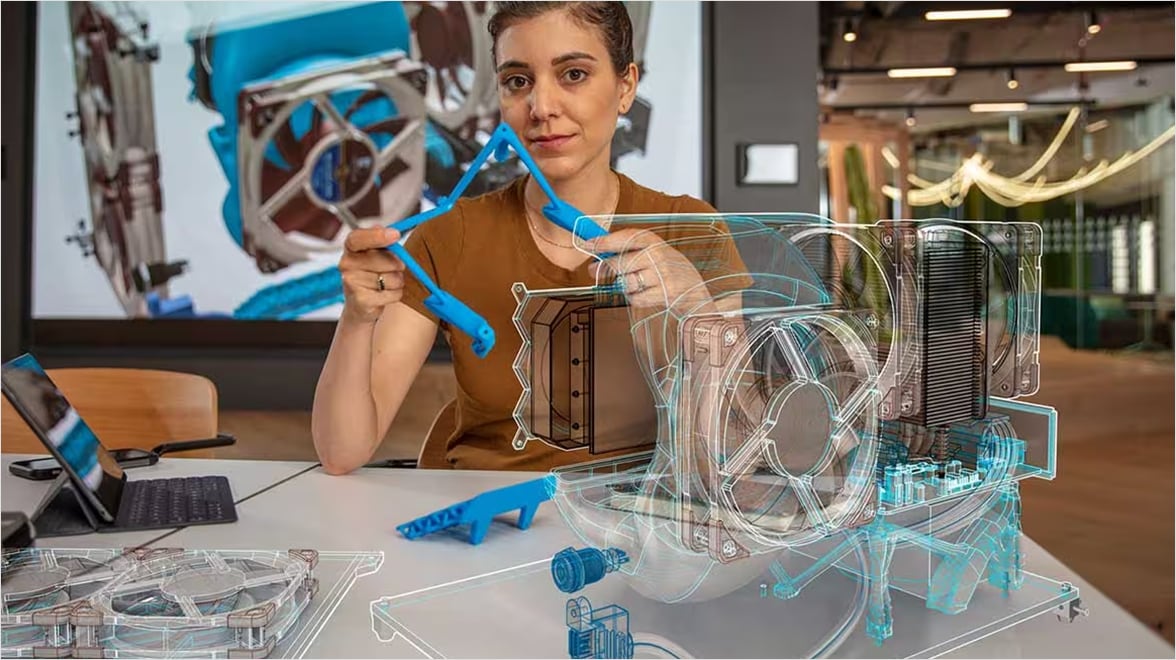& Construction

Integrated BIM tools, including Revit, AutoCAD, and Civil 3D
& Manufacturing

Professional CAD/CAM tools built on Inventor and AutoCAD
A meticulously designed PCB is at the center of all revolutionary products. Don't settle and demand excellence using the best tool to bring your ideas to life.
Autodesk Fusion is the market's first and only cloud product development platform that seamlessly integrates design, engineering, and electronics workflows.
Eliminate multiple tools and data translation issues. Streamline workflows, optimize circuit designs, and produce high-quality products faster.
Fine-tune component placement with seamless electromechanical workflows with no file conversions.
Create electronic components with functional 3D models quickly with all IPC compliant calculators.
Increase your productivity through automation, collaboration, and interoperability to reduce non-value added processes.
Reduce costs and maximize the design time with integrated electronic design capabilities.
Save valuable design time with a complete set of schematic tools. Get access to thousands of components. Interconnect circuits and create custom attribute assignments.
The PCB editor lets you connect your ideas together in the shortest time possible. Even the layout of dense boards is possible with a complete set of PCB layout tools.
Stay true to your manufacturing requirements with customizable design rules.
Make sure that your PCB fits the first time, every time with the only genuinely unified MCAD to ECAD software.
Stay focused on your design instead of creating parts with ready-to-use PCB library content and component wizards.
Ensure accuracy and get your schematics right the first time with fully functional SPICE simulation.
Companies that streamline access to PCB and mechanical data at design time release 90% of products on time – 67% better than those who don’t have access to the same data.
An average of $33,967 per design launch is saved by companies that implement cross-domain collaborative, revision control, and concurrent workflows.
Companies that interconnect manufacturing and electronics design meet their costs and reliability goals 85% more than their competitors.
See how an integrated CAD, CAM, CAE, and PCB software platform delivers unprecedented value to designers, engineers, and manufacturers.
This guide highlights important things that you need to know as you get up to speed with the electronics workspace.
Trace length and high-speed PCB designs go hand-in-hand. This ultimate guide will provide all the details you need to get your electronics design right the first time.
Learn how to use electronic design automation and modular design blocks to streamline the development process.
Learn what blind vias, buried vias, and micro vias are and how they play a particularly important role in PCB design.
Having trouble understanding the importance of impedance? Don’t worry; you’re not alone. Let’s explain the details.
Take an in-depth look at what exactly USB 3.0 is and the best routing practices involved in its PCB design.
Yes, Autodesk Fusion unifies MCAD and ECAD workflows. Whether you’re an electrical engineer looking for a cloud-based PCB design tool or an industrial designer looking to incorporate PCBs into your work, the Autodesk Fusion Electronics Workspace is a comprehensive and affordable end-to-end solution that includes 999 schematics, 16 signal layers, and unlimited board area.
Electronics software refers to computer programs that are designed for use in the field of electronics. These software tools are used to design, simulate, analyze, and test electronic circuits and systems. They provide a range of functionalities, such as schematic capture, circuit simulation, PCB (Printed Circuit Board) design, and signal integrity analysis.
PCB design software, also known as Electronic Design Automation (EDA) software, is a type of software used to design and layout printed circuit boards (PCBs). PCBs are essential components of electronic devices and serve as the foundation for connecting and mounting electronic components.
Electronic circuit design is the first step for every electronics design project and requires the creation of a schematic diagram. The schematic defines how the pins of electrical components are logically connected together on a printed circuit board (PCB). When the circuit design is complete, engineers can use their schematic to perform SPICE simulations or translate their schematic into PCB design software.
ECAD/MCAD (Electronic Computer-Aided Design/Mechanical Computer-Aided Design) integration is important in the field of product design and development, particularly for electronic devices. It refers to the seamless integration of electronic design software (ECAD) and mechanical design software (MCAD) to enable collaboration and synchronization between electrical and mechanical design teams. ECAD/MCAD integration is important for:
Design Efficiency: ECAD/MCAD integration allows for concurrent design, where electrical and mechanical design teams can work simultaneously on their respective aspects of the product. This reduces design iterations, improves efficiency, and shortens the overall product development cycle.
Design Optimization: Integration enables designers to consider both electrical and mechanical constraints during the design process. This makes sure that the electrical components fit properly within the mechanical enclosure, avoiding conflicts and optimizing the overall design.
Interference Detection: ECAD/MCAD integration helps in detecting and resolving any potential interference or clashes between electrical and mechanical components. It allows designers to identify issues such as component collisions, improper clearances, or routing conflicts early in the design phase.
Improved Communication: ECAD/MCAD integration facilitates better communication and collaboration between electrical and mechanical design teams. It allows for real-time sharing of design data, annotations, and feedback, making sure that both teams are aligned and working toward a common goal.
Manufacturing Considerations: Integration between ECAD and MCAD tools makes sure that the design accounts for manufacturing considerations. For example, it allows designers to optimize the placement of components for efficient assembly, allow for proper heat dissipation, and consider the mechanical stress on the PCB during operation.
Documentation and Visualization: ECAD/MCAD integration enables the generation of comprehensive documentation and visual representations of the design. This includes 3D models, assembly drawings, and detailed bill of materials (BOM). All of which are important for manufacturing, assembly, and maintenance processes.
Electronic Design Automation (EDA) refers to a category of software tools and methodologies used in the design, analysis, and verification of electronic systems. EDA software automates various tasks involved in the design process, helping engineers and designers create complex electronic circuits and systems more efficiently.
EDA tools are widely used in industries such as semiconductor, telecommunications, consumer electronics, automotive, and aerospace. They help streamline the design process, reduce errors, improve productivity, and accelerate time-to-market for electronic products. EDA

